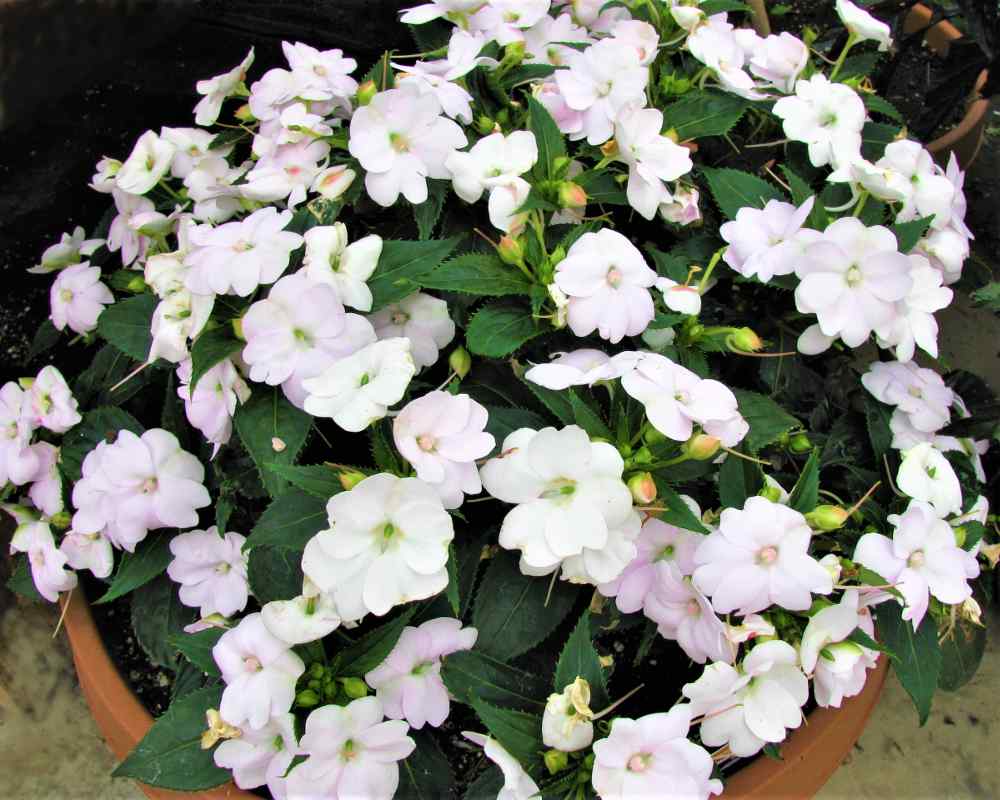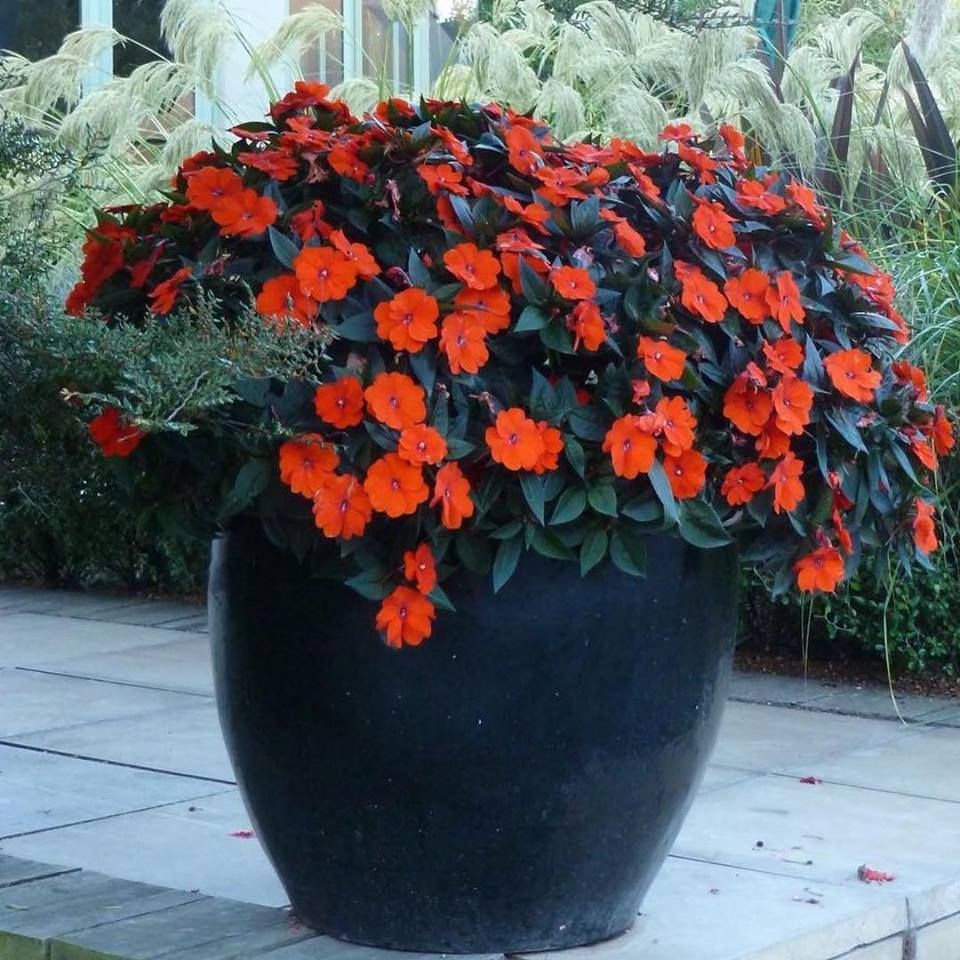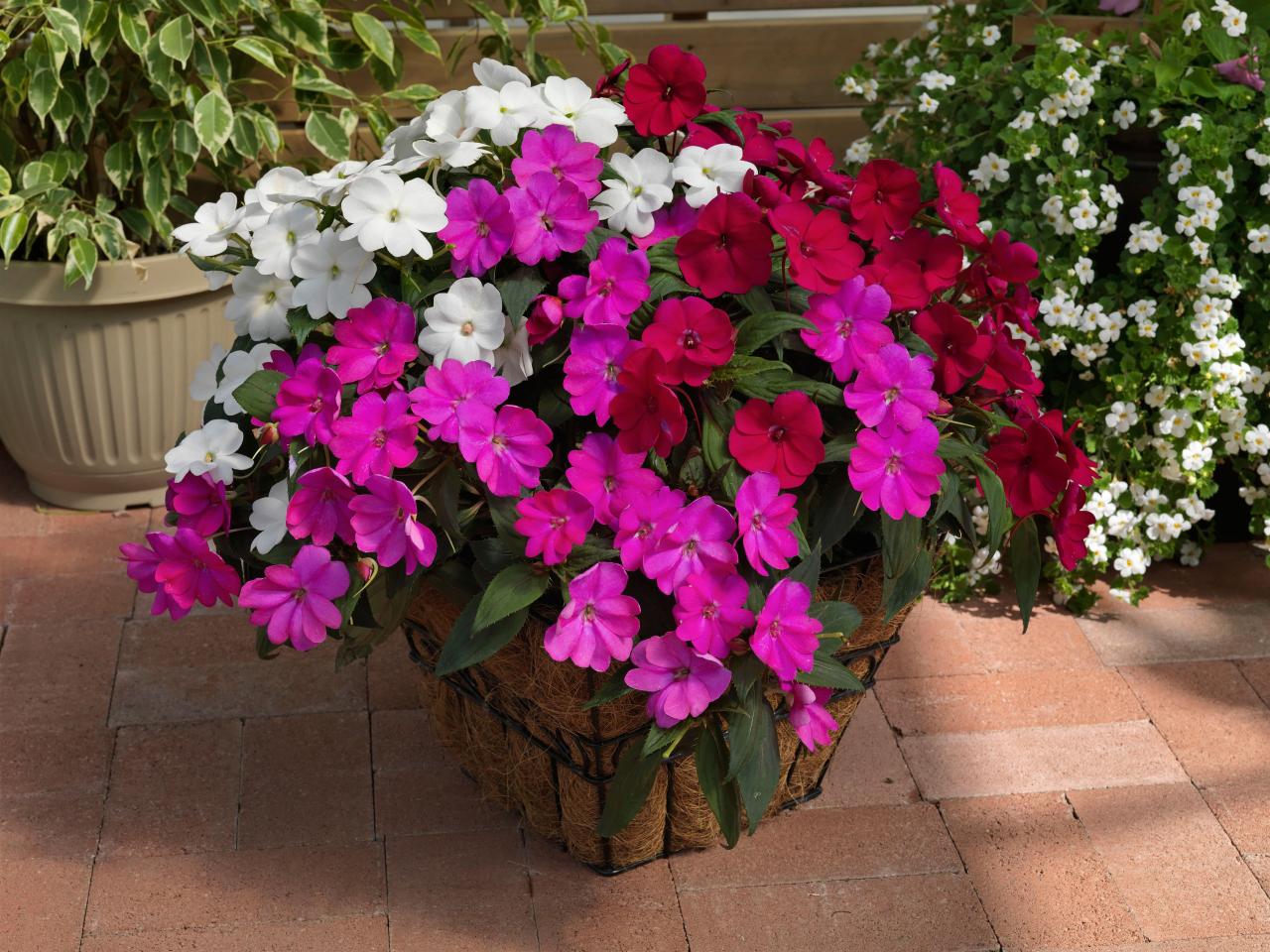Sunpatiens, a hybrid form of impatiens, have gained immense popularity among gardeners and plant enthusiasts due to their vibrant colors, resilience, and ability to thrive in various conditions. If you’re considering adding a splash of color to your patio, balcony, or garden, planting Sunpatiens in pots could be the perfect choice. This comprehensive guide will delve into everything you need to know about growing and caring for Sunpatiens in pots, ensuring your plants flourish throughout the growing season. 🌼
Why Choose Sunpatiens for Potted Plants?
Sunpatiens are not just visually appealing; they offer several advantages for container gardening:
- Vibrant Colors: Available in an array of colors, from deep reds to soft pinks and pure whites, Sunpatiens can brighten up any space.
- Heat and Drought Tolerance: Unlike traditional impatiens, Sunpatiens are more tolerant of heat and can withstand some drought, making them perfect for sunny locations.
- Low Maintenance: Sunpatiens require minimal care, making them suitable for both novice and experienced gardeners.
- Long Blooming Period: These plants bloom from spring until frost, providing consistent color throughout the growing season.
Choosing the Right Pots for Sunpatiens: Sunpatiens In Pots
When selecting pots for your Sunpatiens, consider the following factors:
Size Matters
Choosing the right pot size is crucial for the healthy growth of Sunpatiens. The pot should be at least 10-12 inches in diameter for single plants and larger if you plan to plant multiple specimens.
Drainage is Key
Ensure that your pots have adequate drainage holes to prevent water from accumulating, which can lead to root rot.
Material Choices
Pots come in various materials, including plastic, terracotta, and ceramic. Each has its pros and cons:
| Material | Pros | Cons |
|---|---|---|
| Plastic | Lightweight, inexpensive, retains moisture | Less breathable, can fade in sunlight |
| Terracotta | Breathable, great drainage, aesthetic appeal | Heavier, can dry out quickly |
| Ceramic | Stylish, durable, retains moisture well | Heaviest option, often more expensive |
Soil Requirements for Sunpatiens in Pots
The right soil is vital for the healthy growth of Sunpatiens. A well-draining potting mix that retains moisture without becoming soggy is ideal.
Components of the Ideal Mix
To create the perfect environment for your Sunpatiens, consider the following soil components:
- Peat Moss: Helps retain moisture.
- Perlite: Provides aeration and drainage.
- Compost: Offers essential nutrients for plant growth.
> Important Note: Avoid using garden soil, as it may not drain well and can introduce pests or diseases.
Planting Sunpatiens in Pots
Now that you have your pots and soil ready, it’s time to plant your Sunpatiens!
Steps for Planting
- Prepare Your Pot: Fill your pot with the prepared potting mix, leaving about an inch of space at the top.
- Choose Your Plants: Select healthy, vibrant Sunpatiens plants, either from seeds or nursery starts.
- Planting: Create a hole in the soil for each plant. If you’re planting multiple plants, ensure they’re spaced about 10-12 inches apart.
- Watering: Water the plants thoroughly after planting to help settle the soil.
Caring for Sunpatiens in Pots

Proper care will ensure your Sunpatiens thrive in their pots:
Watering Guidelines
Sunpatiens prefer consistently moist soil. Here’s how to effectively water your plants:
- Check the top inch of soil; if it feels dry, it’s time to water.
- Water deeply to encourage strong root growth, ensuring excess water drains out.
- Reduce watering during cooler months as the plants’ needs decrease.
Fertilizing Your Sunpatiens
Sunpatiens benefit from regular feeding during the growing season:
- Type: Use a balanced, water-soluble fertilizer.
- Frequency: Fertilize every 4-6 weeks, adjusting based on the growth rate and health of the plants.
Pruning and Deadheading

To encourage bushier growth and more blooms, consider pruning your Sunpatiens:
- Pinch off spent blooms to promote new growth.
- Trim back any leggy stems to maintain a compact shape.
Pest and Disease Management
While Sunpatiens are relatively resistant to pests, keep an eye out for common issues:
- Aphids: These can be controlled with insecticidal soap.
- Powdery Mildew: Ensure good air circulation and avoid overhead watering to prevent this fungal disease.
> Important Note: Regularly inspect your plants for any signs of pests or diseases to catch issues early.
Sunpatiens in Different Climates
Sunpatiens are incredibly versatile, thriving in various climate conditions:
Sunny Locations
Sunpatiens flourish in full sun to partial shade, making them perfect for bright patios and balconies.
Shaded Areas
While Sunpatiens can tolerate some shade, they still require at least a few hours of direct sunlight daily to bloom optimally.
Hot and Humid Conditions
These plants are well-suited for warmer climates and can tolerate humidity, but ensure they have adequate water.
Companion Planting with Sunpatiens
Enhance the beauty of your Sunpatiens by pairing them with complementary plants:
Suggestions for Companion Plants
- Ferns: Their lush foliage complements the vibrant blooms of Sunpatiens.
- Petunias: These can add additional colors and textures to your container garden.
- Calibrachoa: The small petunia-like flowers work beautifully with Sunpatiens.
> Important Note: When selecting companion plants, consider their watering and sunlight requirements to ensure compatibility.
Seasonal Care for Sunpatiens
Your care routine may vary with the seasons:
Spring and Summer Care
During these seasons, focus on:
- Consistent watering and fertilizing.
- Regular pruning to promote bushy growth.
Autumn Care, Sunpatiens In Pots
As temperatures begin to drop, you should:
- Reduce watering frequency.
- Prepare to bring pots indoors if frost is expected.
Winter Care
If you live in an area with cold winters:
- Sunpatiens can be overwintered indoors in a sunny spot.
- Limit watering and fertilizing during the dormant period.
Propagation of Sunpatiens
Expanding your collection of Sunpatiens is easier than you might think:
Cutting Method
- Take cuttings of healthy stems, ensuring they have at least a couple of leaves.
- Place the cuttings in water or moist potting mix to encourage root development.
- Once roots are established, transplant into pots and care for them as you would mature plants.
Seed Propagation
While less common, you can also propagate Sunpatiens from seeds:
- Start seeds indoors 8-10 weeks before the last frost date.
- Transplant seedlings outdoors after the danger of frost has passed.
Common Questions about Sunpatiens in Pots
Here are some frequently asked questions that may help you in your gardening journey:
How often should I water my Sunpatiens in pots?
Water when the top inch of soil is dry, ensuring the soil is consistently moist but not soggy.
Can Sunpatiens survive winter outdoors?
In most climates, Sunpatiens are treated as annuals. They can be brought indoors to survive the winter.
Are Sunpatiens prone to any diseases?
Sunpatiens are generally disease-resistant, but they can occasionally suffer from powdery mildew if grown in overly humid conditions.
Can I grow Sunpatiens indoors?
Yes! Provide them with bright, indirect light and ensure they have good drainage.
What to do if my Sunpatiens are leggy?
Pinch back the stems to encourage bushier growth and ensure they receive enough light.
With the right care and conditions, your Sunpatiens will thrive in pots, adding vibrant color and life to your outdoor and indoor spaces. Whether you’re looking to spruce up your garden or enhance your patio’s aesthetic, Sunpatiens in pots are a fantastic choice that will not disappoint. Happy planting! 🌻
